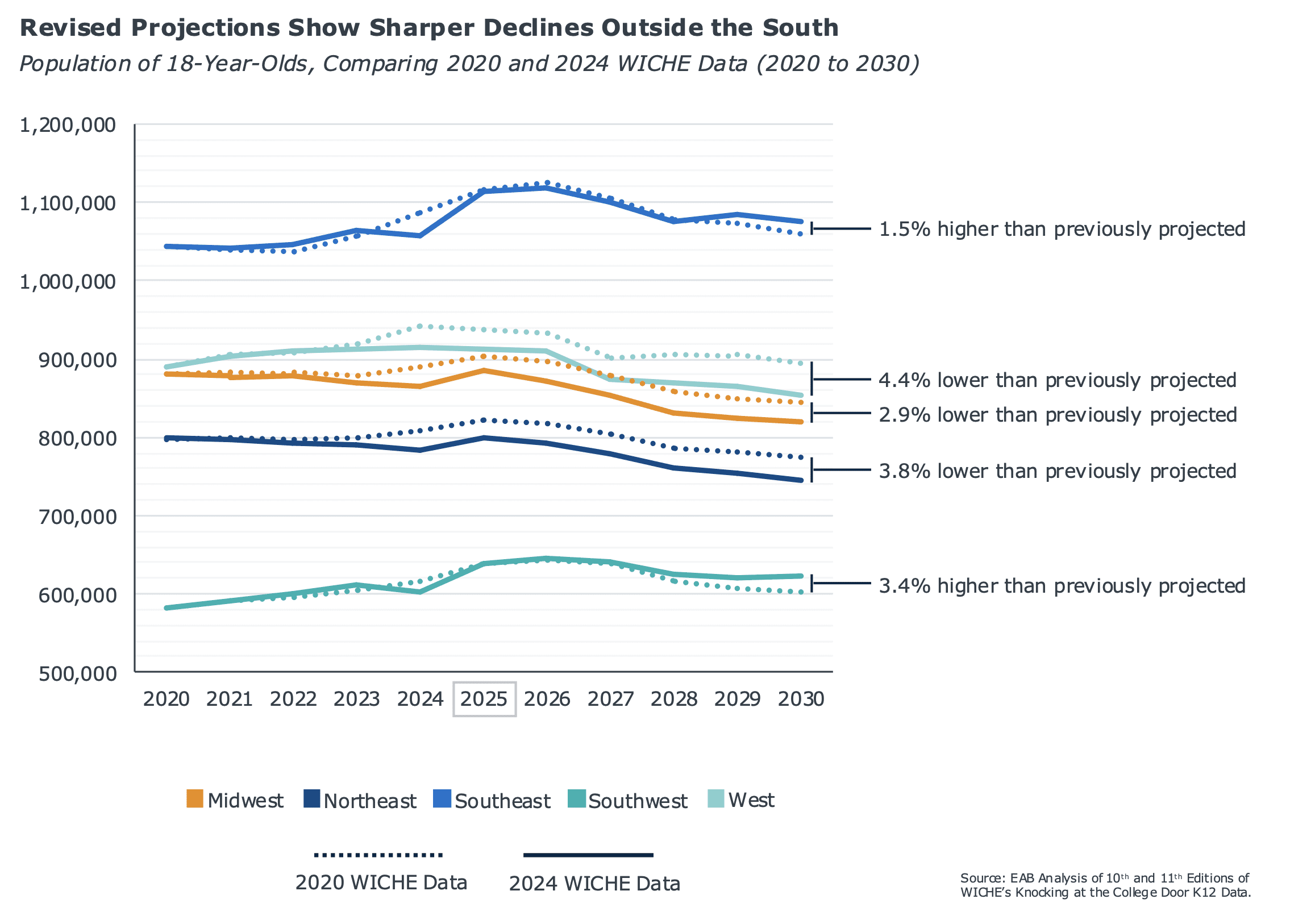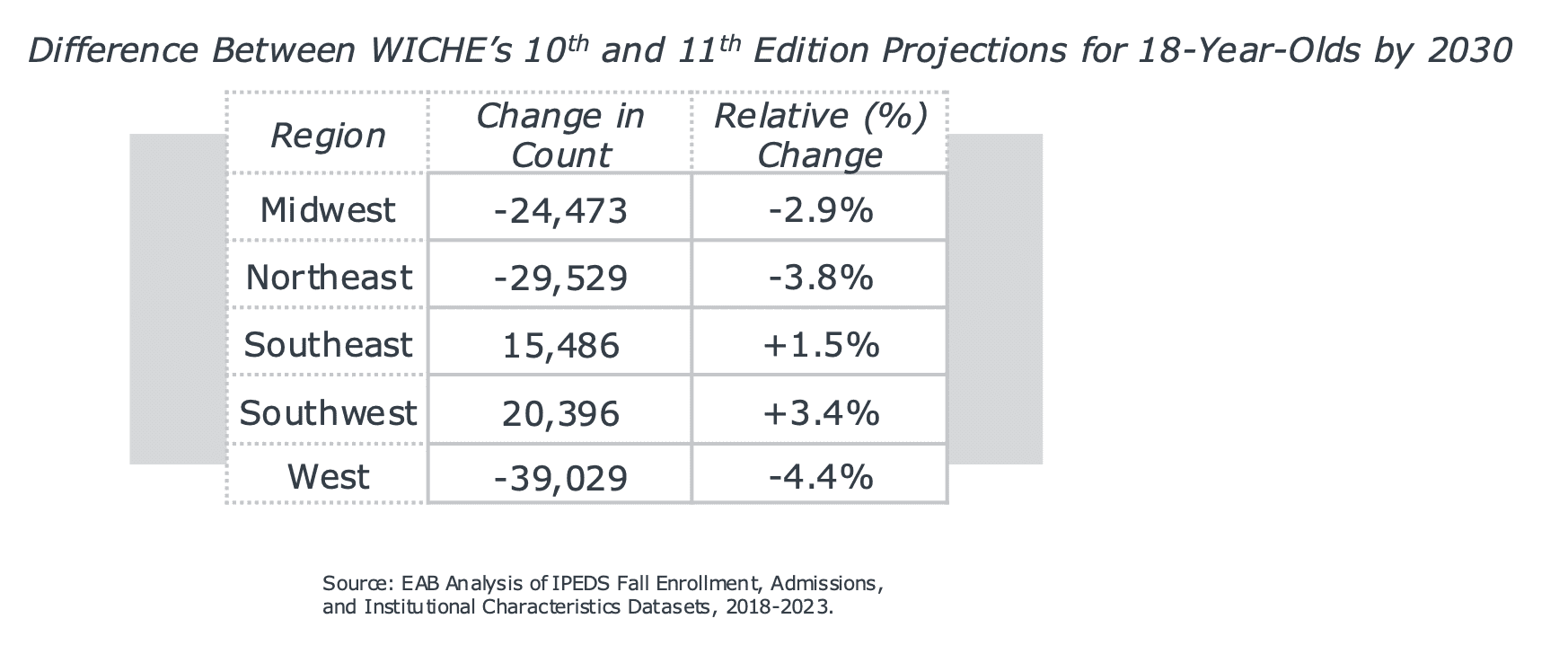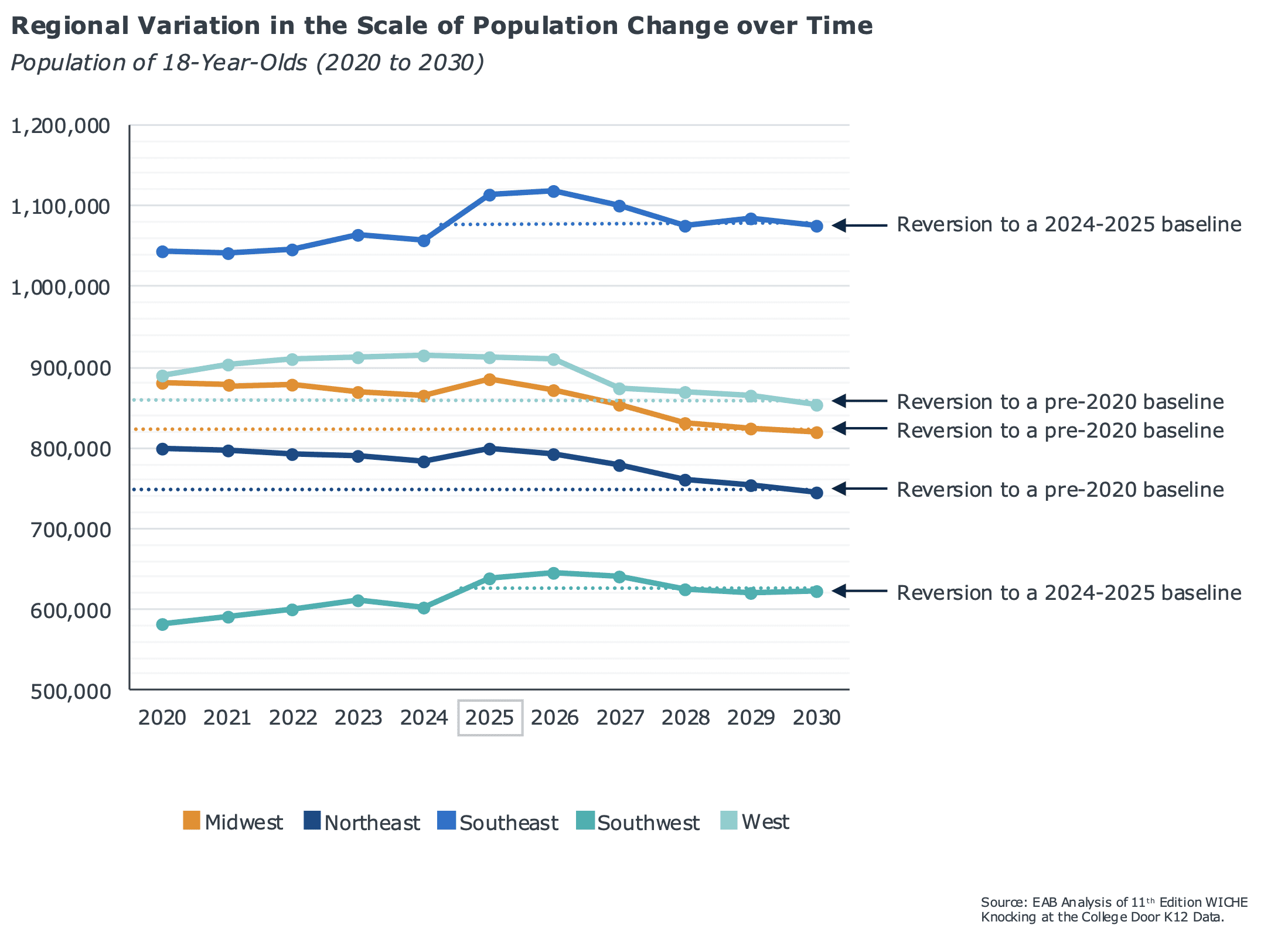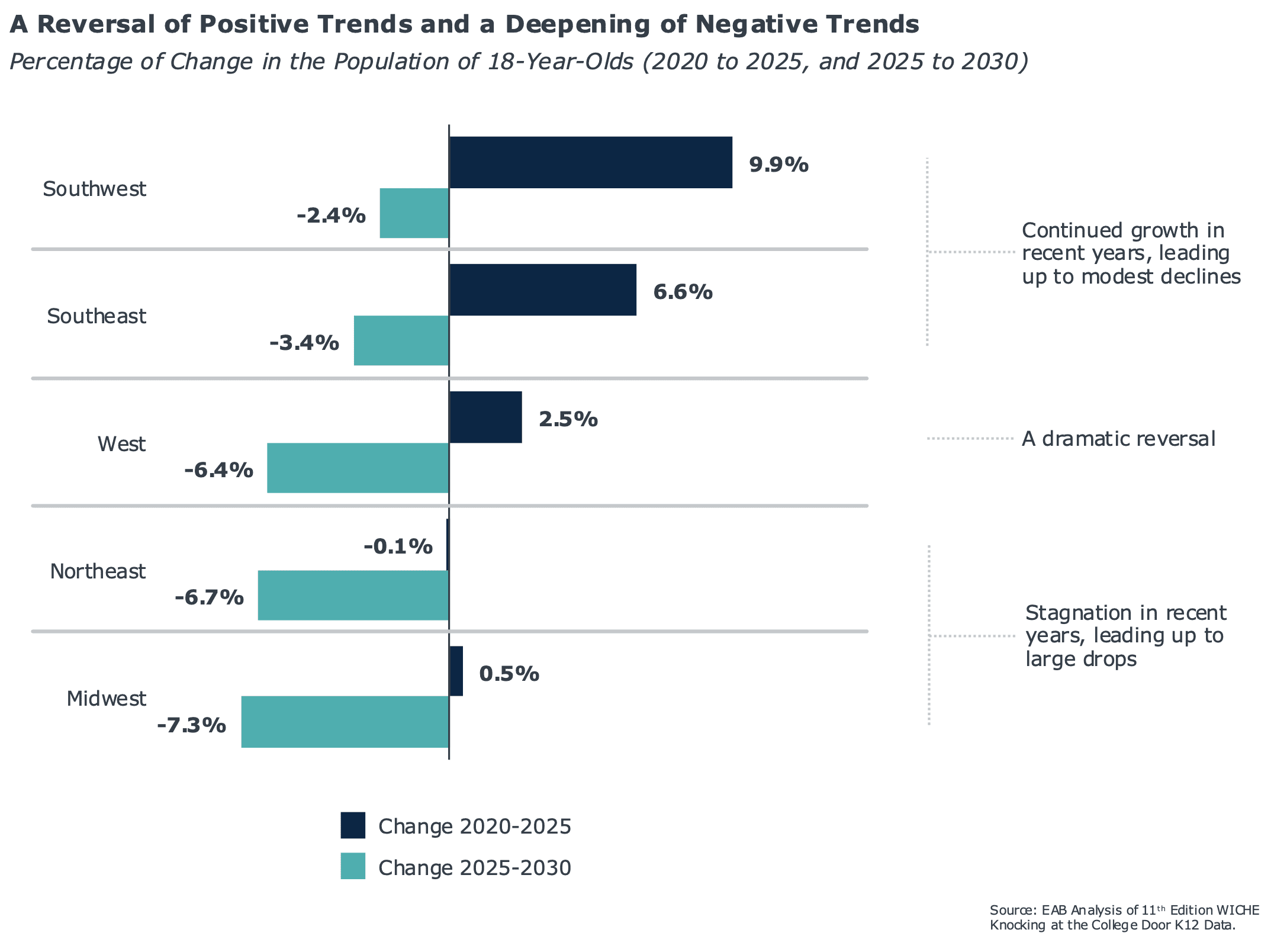The real demographic crisis isn’t national—it’s regional
For years, enrollment leaders have planned around the long-anticipated ‘demographic cliff’ of 2025, which is when we expect the number of 18-year-olds in the U.S. to peak. That forecast has shaped cabinet discussions, campus strategies, and higher ed planning nationwide.
This past year, the Western Interstate Commission for Higher Education (WICHE) released a new forecast that updates the data many of us have relied on since 2020. The national outlook remains familiar, projecting that the number of college-age students will decline through the end of the decade on the same curve we’ve come to expect. However, while that national curve looks unchanged, the regional data tell a different—and sometimes troubling—story. As you’ll see in the charts below, the depth of the downturn will be even deeper in three regions, while two others will remain more stable than we thought.

The regional divide in student populations is widening
As the chart above shows, several regional populations have already dipped below previous expectations when we compare WICHE’s new projections with its prior forecast, especially in the West, Midwest, and Northeast. On top of that, the new projections show sharper drops in the 18-year-old population through 2030 than the previous forecast suggested for those regions. In some cases, we expect the population by the end of this decade to be nearly 5% smaller than previously estimated. This downward shift means even states that had already braced for a slow decline now face a steeper one.
Meanwhile, the populations of the Southeast and Southwest are trending much better than previously expected. Their updated projections still show an overall decline in the student population, but by 2030 they end up 3 to 4% higher than previously projected. We already expected these regions would weather this demographic shift better than other parts of the country, but these new data suggest that schools in those regions may retain even more demographic momentum than once thought.

Ultimately, while a few percentage points of difference may balance each other out on a national scale, examining the data regionally makes it clear that factors early in the decade (e.g., pandemic-era migration) have widened the already-large gap between declining and growing areas. Schools in each region should therefore prepare for those demographic differences to intensify—magnifying the trends that have already reshaped enrollment over the past several years.

Different population trajectories with different implications
Looking ahead to where those new projections lead by 2030, the implications for colleges in the hardest-hit regions (i.e., the West, Midwest, and Northeast) are stark: the population of traditional-age students is set to fall to levels not seen since well before 2020. Given that the downward demographic shifts in those regions in the last five years have already led to many institutional closures and mergers, the pace of closures will only accelerate unless schools adapt their recruitment and retention strategies.
In contrast, the population trajectories in the Southeast and Southwest tell a different story. Their projected downturns are more modest and expected to level off around 2030, at which point they’ll have returned to student population levels seen just this past year. These diverging paths could mark a shift from rapid demographic change to a more stable (but deeply uneven) interregional dynamic.

The ripple effect on recruitment markets
The deeper imbalance we now expect will reshape recruitment markets nationwide. Schools in faster-growing (or slower-declining) regions may temporarily enjoy demographic tailwinds, but they’ll also face mounting competition as institutions from other regions expand their recruiting efforts in the more stable states. Understanding where your institution sits in the new interregional dynamic is increasingly essential for enrollment strategy.
Fortunately, demographics don’t tell the whole story. As our College Search Trends Across Space and Time: 2025 Edition research shows, strategy and market positioning can still move the needle. Several Southeastern states (e.g., LA, MS, AL) have seen declines in the college-going population but continued to grow enrollment despite that. Conversely, schools across parts of the Midwest and West (e.g., WA, CO, KS, and IA) lost students even as their college-going populations grew. These examples illustrate that, while population trends are a foundational component of the recruitment landscape, institutional choices still determine who succeeds within it.
These findings come from EAB’s College Search Trends Across Space and Time: 2025 Edition, which details how demographic forces interact with application, enrollment, and migration trends.

More Blogs

Demographics shape the enrollment landscape, but strategy determines success

What changed in the graduate lead gen landscape in 2025
